Wildflowers of the Adirondacks:
Marsh Cinquefoil (Comarum palustre)
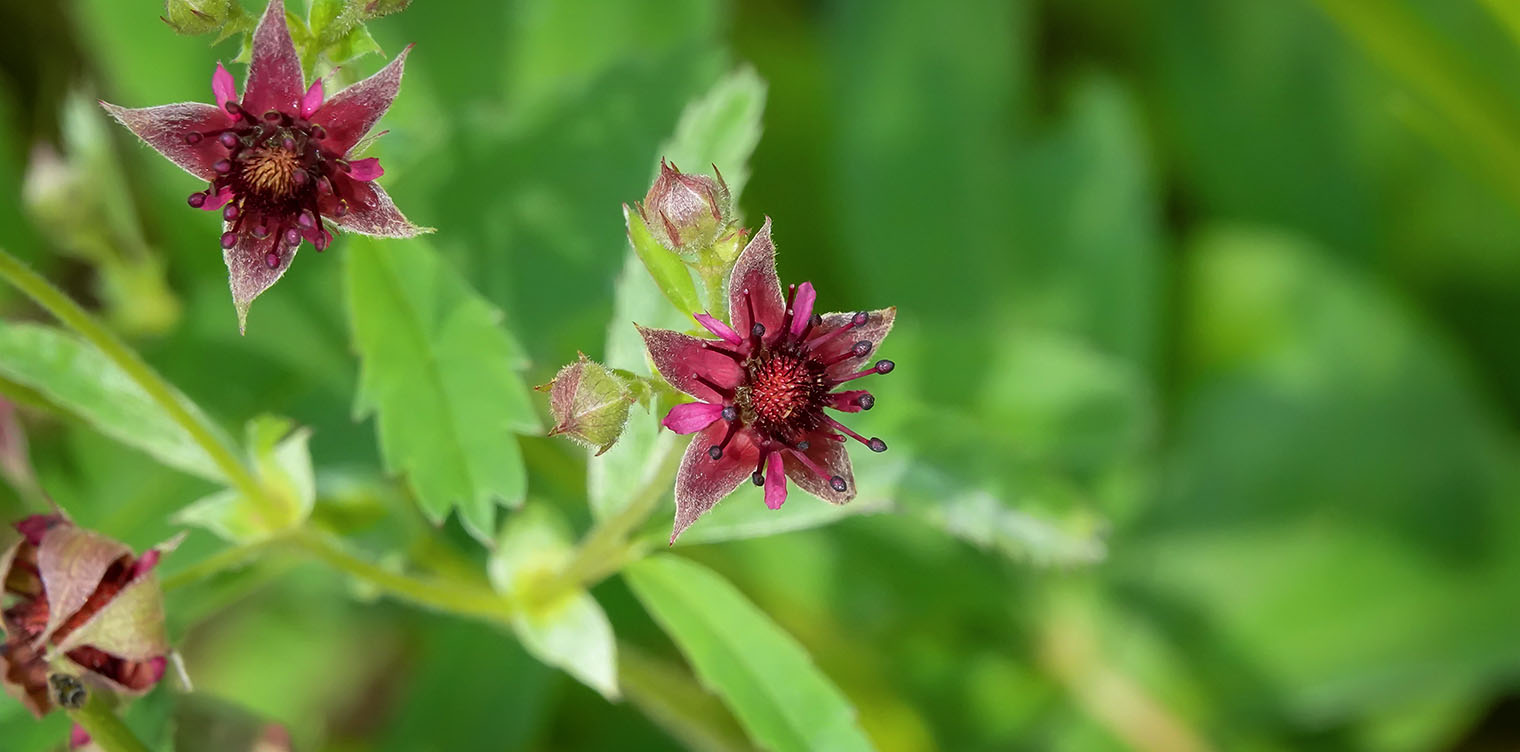
Marsh Cinquefoil (Comarum palustre) is a wetland plant that blooms in summer in the Adirondacks. It is a member of the Rose family. The plant is also called Purple Cinquefoil, Marsh Potentilla, Marsh Cinquefoil, and Purple Marshlocks.
Identification of Marsh Cinquefoil
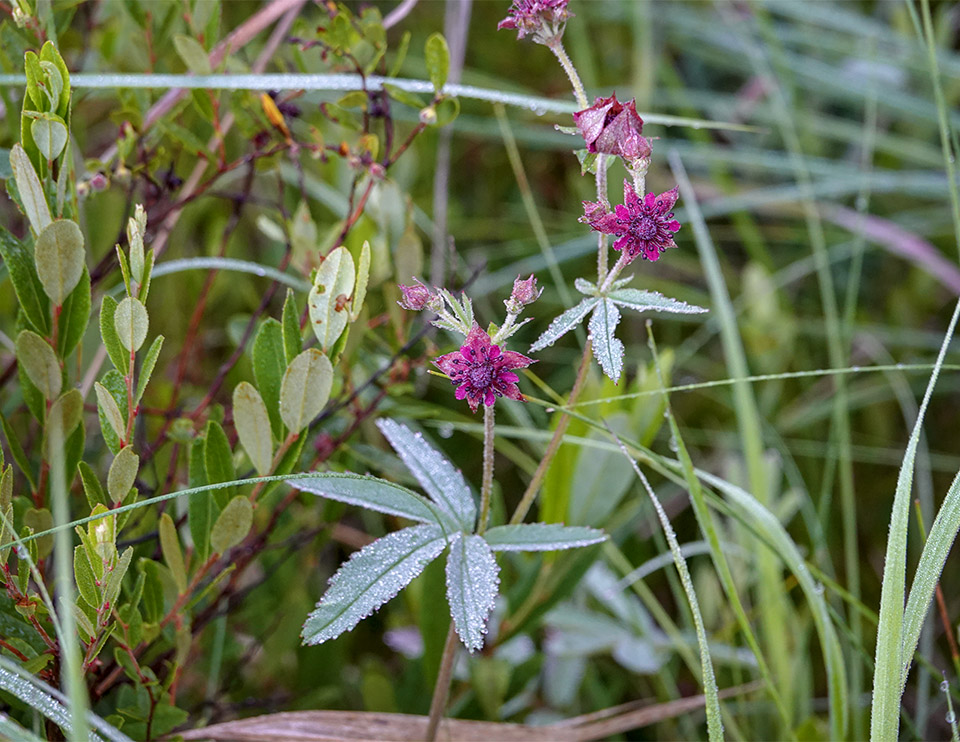
Marsh Cinquefoil is a sprawling plant, with stems that grow up to about two feet long. The lower stems, which are often submerged in water, are woody, reddish, and smooth. The upper stems are green with fine hairs.
The leaves of Marsh Cinquefoil are compound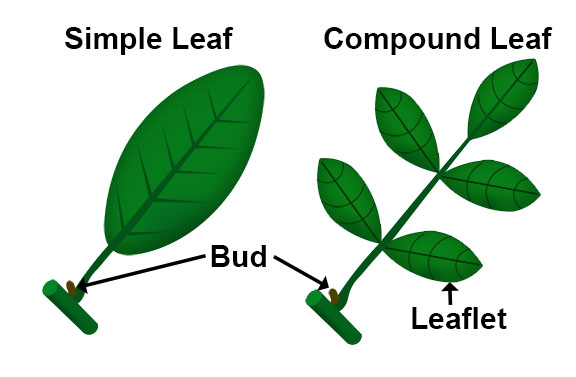 Compound Leaf: A leaf that is divided to the midrib, with distinct, expanded portions called leaflets., meaning that the leaves are composed of a number of leaflets. This species has five to seven oblong to elliptical leaflets. The leaflets are one to three inches long. The edges are sharply toothed
Compound Leaf: A leaf that is divided to the midrib, with distinct, expanded portions called leaflets., meaning that the leaves are composed of a number of leaflets. This species has five to seven oblong to elliptical leaflets. The leaflets are one to three inches long. The edges are sharply toothed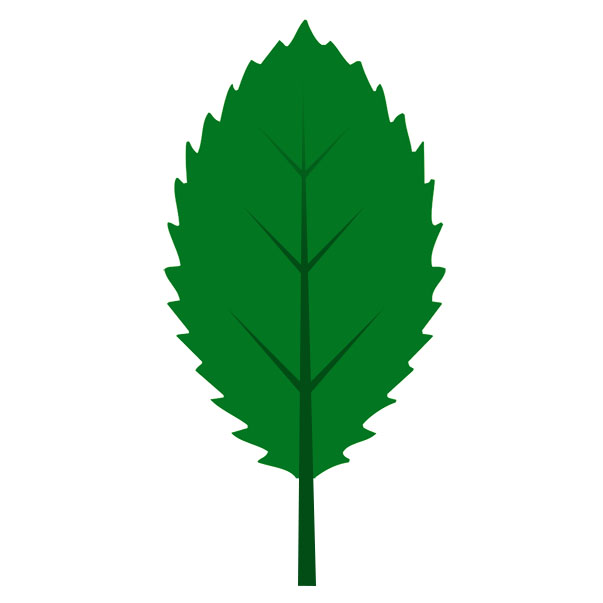 Toothed: Leaves which have a saw-toothed edge.. The leaflets are bluish-green on the upper side and grayish on the underside.
Toothed: Leaves which have a saw-toothed edge.. The leaflets are bluish-green on the upper side and grayish on the underside.
The flowers are purple to red, about ¾ to one inch wide. The flowers have five to eight oval petals alternating between triangular sepals.gif) Sepals: The parts that look like little green leaves and cover the outside of a flower bud to protect the flower before it opens. which are twice as long as the petals
Sepals: The parts that look like little green leaves and cover the outside of a flower bud to protect the flower before it opens. which are twice as long as the petals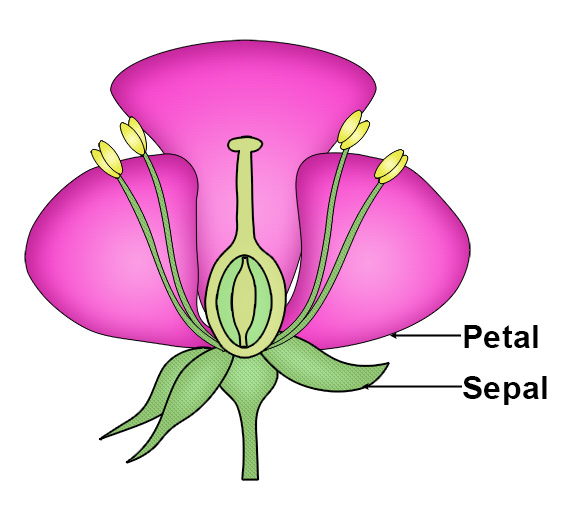 Petals: Modified leaves that surround the reproductive parts of flowers. Petals are often brightly colored or unusually shaped to attract pollinators.. The flower's conical center is dark purple. It is surrounded by many purple stamens
Petals: Modified leaves that surround the reproductive parts of flowers. Petals are often brightly colored or unusually shaped to attract pollinators.. The flower's conical center is dark purple. It is surrounded by many purple stamens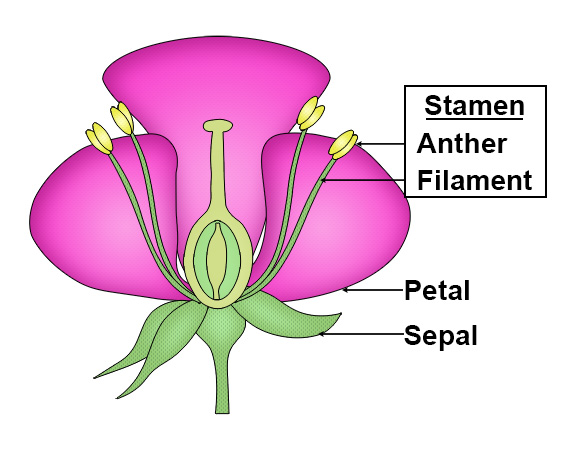 Stamen: The male part of the flower, made up of the filament and anther..
Stamen: The male part of the flower, made up of the filament and anther..
In the Adirondack Mountains, Marsh Cinquefoil usually blooms starting in early summer. The pattern of bloom times for Adirondack Park observations on iNaturalist indicates that most flowering times cluster in late June through late July.
The fruit, which resembles a small, dried strawberry, consists of a head of smooth, dry seeds. In the Adirondacks, Marsh Cinquefoil usually fruits in mid- to late August.
Uses of Marsh Cinquefoil
Marsh Cinquefoil has very limited uses. This plant reportedly was used by the Chippewa and Ojibwa to treat dysentery and stomach cramps. The dried leaves were used as a tea substitute. A red dye can be obtained from the flowers.
Wildlife Value of Marsh Cinquefoil
Marsh Cinquefoil has minimal wildlife value. The flowers are attractive to both bees and hoverflies, who are attracted to the rancid smell produced by the flowers.
Distribution of Marsh Cinquefoil
Marsh Cinquefoil grows in Canada and the northern US, south to northern Iowa, Ohio, and northern New Jersey. Marsh Cinquefoil is listed as endangered in New Jersey.
This species is found in most counties in the northeastern part of New York State. In the Adirondack Park, plant populations for this species have been vouchered for all Blue Line counties except Clinton, Saratoga, and Washington counties.
Habitat of Marsh Cinquefoil
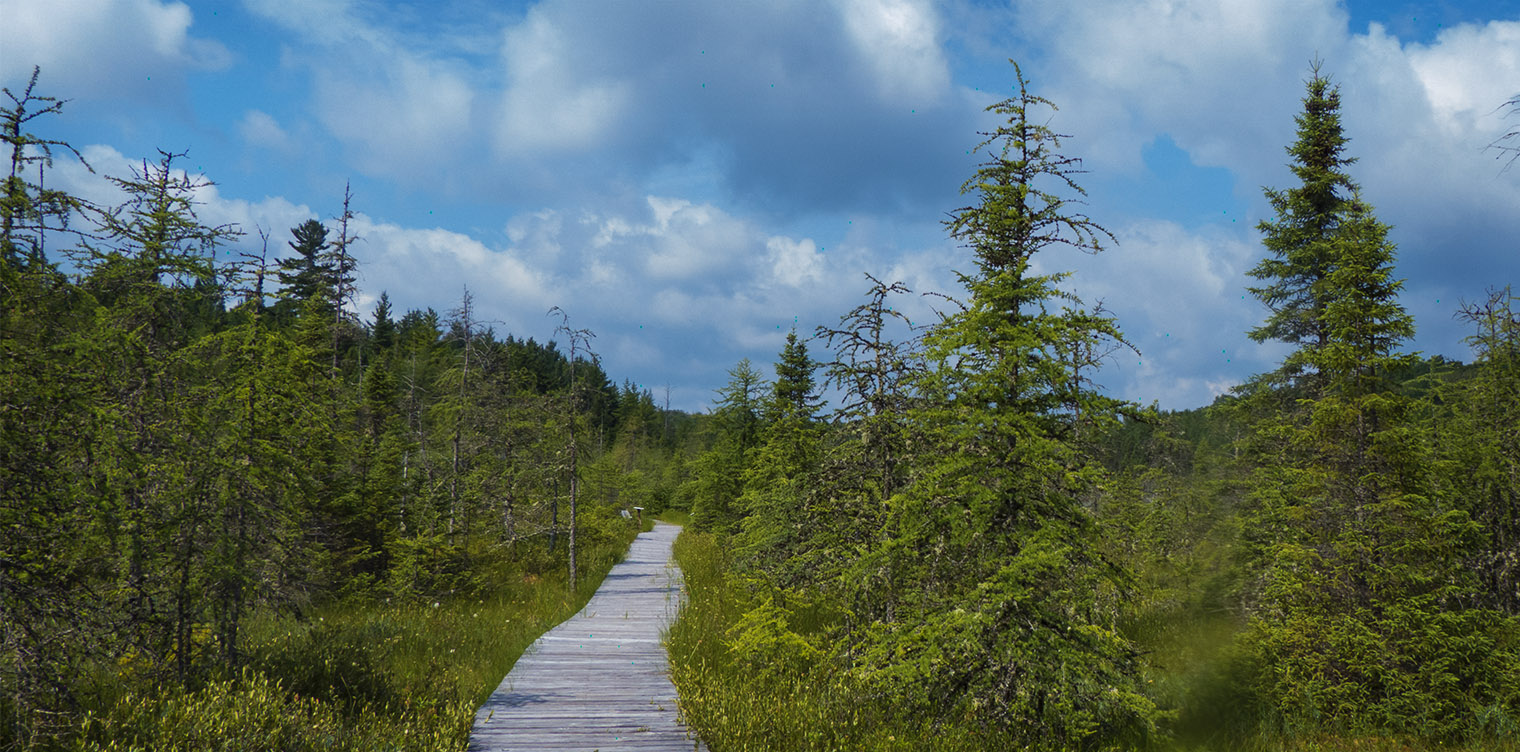
Marsh Cinquefoil is classified as an Obligate Wetland plant (OBL), meaning that it almost always occurs in wetlands. It grows in shallow water or along the edges of ponds, lakes, and streams, and in marshes, swamps, fens, flooded meadows, and the edges of bogs. In the Adirondack Mountains, Marsh Cinquefoil is found in several wetland ecological communities:
A convenient place to see Marsh Cinquefoil is Barnum Bog at the Paul Smiths VIC, where it can be seen from the boardwalk on the Boreal Life Trail. Look for it growing near other wetland-dwelling plants such as Cottongrass, Pitcher Plant, Rose Pogonia, and Sheep Laurel.
References
Michael Kudish. Adirondack Upland Flora: An Ecological Perspective (The Chauncy Press, 1992), p. 154.
New York Flora Association. New York Flora Atlas. Marsh-cinquefoil. Comarum palustre L. Retrieved 26 April 2017.
United States Department of Agriculture. The Plants Database. Purple Marshlocks. Comarum palustre L. Retrieved 26 April 2017.
Flora of North America. Comarum palustre Linnaeus. Retrieved 26 April 2017.
Native Plant Trust. Go Botany. Comarum palustre L. Retrieved 6 March 2020.
New York State. Department of Environmental Conservation. New York Natural Heritage Program. Ecological Communities of New York State. Second Edition (March 2014), pp. 48-49, 55-56, 58-59, 60, 73-74. Retrieved 17 October 2015.
New York Natural Heritage Program. 2020. Online Conservation Guide for Medium Fen. Retrieved 6 March 2020.
New York Natural Heritage Program. 2020. Online Conservation Guide for Red Maple-Tamarack Peat Swamp. Retrieved 6 March 2020.
New York Natural Heritage Program. 2020. Online Conservation Guide for Rich Graminoid Fen. Retrieved 6 March 2020.
New York Natural Heritage Program. 2020. Online Conservation Guide for Sedge Meadow. Retrieved 6 March 2020.
New York Natural Heritage Program. 2020. Online Conservation Guide for Shallow Emergent Marsh. Retrieved 6 March 2020.
New York State. Adirondack Park Agency. Preliminary List of Species Native Within the Adirondack Park Listed Alphabetically by Scientific Name and Sorted by Habit. Volume 1. Updated 10.23.2006, p. 18. Retrieved 26 January 2017.
iNaturalist. Adirondack Park Observations. Marsh Cinquefoil. Comarum palustre. Retrieved 23 April 2021.
Connecticut Botanical Society. Marsh Cinquefoil. Retrieved 26 April 2017.
University of Wisconsin. Flora of Wisconsin. Comarum palustre L. Retrieved 26 April 2017
Minnesota Wildflowers. Potentilla palustris (Marsh Cinquefoil). Retrieved 26 April 2017.
Lady Bird Johnson Wildflower Center. Comarum palustre L. Retrieved 6 March 2020.
Roger Tory Peterson and Margaret McKenny. A Field Guide to Wildflowers. Northeastern and North-central North America (Houghton Mifflin Company, 1968), pp. 262-263.
Doug Ladd. North Woods Wildflowers (Falcon Publishing, 2001), p. 60.
Donald J. Leopold and Lytton John Musselman. Wildflowers of the Adirondacks (Johns Hopkins University Press, 2020), pp. 8-11, 122.
Lawrence Newcomb. Newcomb's Wildflower Guide (Little Brown and Company, 1977), pp. 230-231.
Meiyin Wu & Dennis Kalma. Wetland Plants of the Adirondacks: Herbaceous Plants and Aquatic Plants (Trafford Publishing, 2011), p. 41.
William K. Chapman et al. Wildflowers of New York in Color (Syracuse University Press, 1998), pp. 56-57.
Alexander C. Martin, Herbert S. Zim, and Arnold L. Nelson. American Wildlife & Plants. A Guide to Wildlife Food Habits (Dover Publications, 1951), pp. 399-400.
Plants for a Future. Comarum palustre - (L.) Scop. Retrieved 26 April 2017.
University of Michigan. Native American Ethnobotany. A Database of Foods, Drugs, Dyes and Fibers of Native American Peoples, Derived from Plants. Purple Marshlocks. Comarum palustre L. Retrieved 26 April 2017.
Charles H. Peck. Plants of North Elba. (Bulletin of the New York State Museum, Volume 6, Number 28, June 1899), p. 91. Retrieved 22 February 2017.
